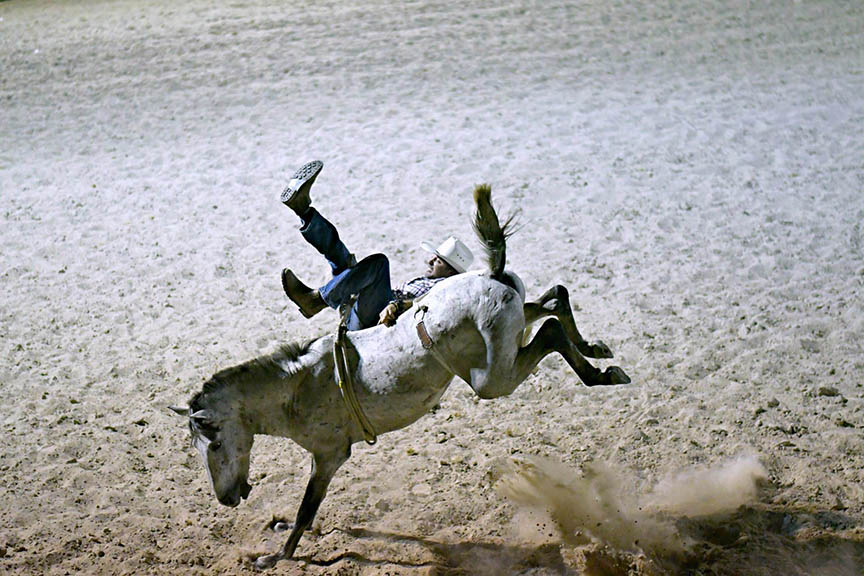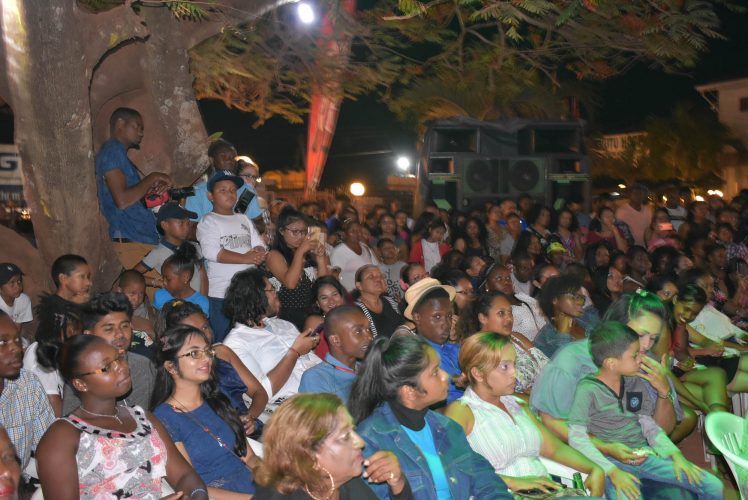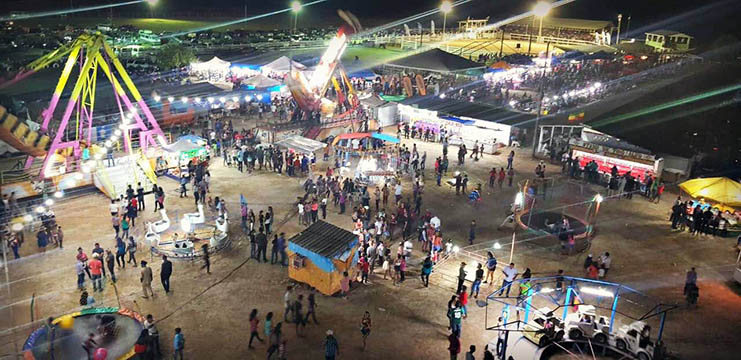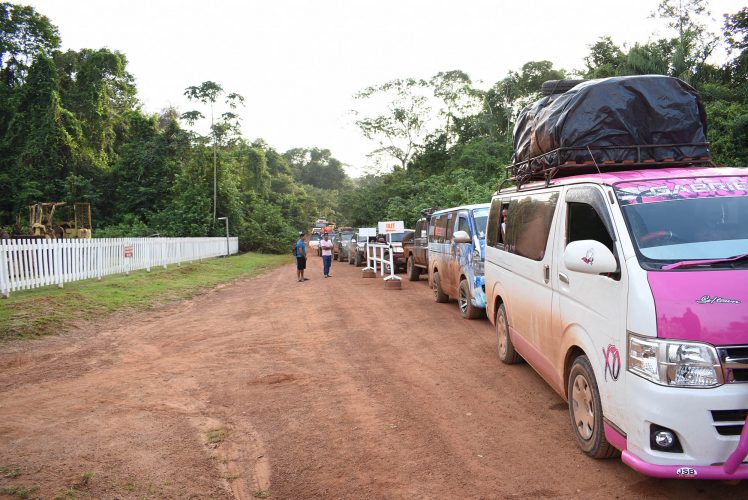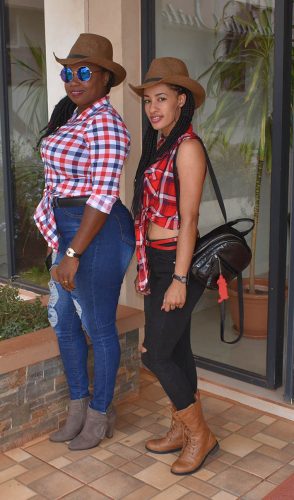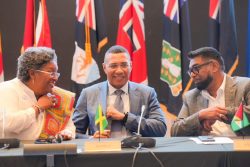Long before last weekend’s Rupununi Ranchers Rodeo at Lethem had started the six hotels whose accommodation amount to approximately 150 rooms had all been taken. Beyond those, the spike in demand for accommodation had resulted in some residents throwing open their homes to meet the shortfall in required accommodation. Even that, however, was not enough and at least one enterprising person had put together limited tented accommodation. That too attracted a generous numbers of takers.
The Rodeo brings visitors to Lethem like moths to a candle flame and the habit of booking accommodation for the next year as soon as the current year’s festivities are over has become commonplace. Accordingly, as early as January, we were told, there had been little if any accommodation to be had.
The Rodeo has its origins in the middle of the last century, when vaqueros competed against each other in various skills familiar to the ranching community. Over time, it grew to become a broader-based community event, located at St. Ignatius before shifting to the more centralized Lethem location in 1985. These days, and without displacing the traditional events that shaped the original programme, it has metamorphosed into a much broader ritual that blends tradition with contemporary preferences.
Nothing in the way of non-coastal entertainment even remotely rivals the Rupununi Ranchers’ Rodeo. For the people of Lethem and the nearby communities it has become a way of life. For coastlanders and visitors seeking an option to the Easter weekend ritual the Rodeo provides a livelier option. Every year, it brings significant numbers of coastal Guyanese by air and alternatively bus, car, SUV and even motorcycle along the unfinished corridor linking Linden and Lethem – offering a long bumpy but scenic ride. The likelihood is that the popularity as much as the economic gains that will accrue to Lethem and neighbouring communities are likely to increase significantly once the Linden-Lethem Highway is completed.
First-timers could easily mistake the rodeo programme for the entire event. That is decidedly not the case. The cosmopolitan group of revelers all gathered in the same space transform the event into a much more varied occasion, a point at which the old ways of an interior community ‘collide’ with the more ‘frenzied’ coastal entertainment culture.
The formal programme usually comprises a host of typical rodeo events including thrilling encounters between men and boys, on the one hand, and difficult-to-handle horses and cows on the other. Visitors with weak stomachs usually find plenty of options to pursue whilst the beauty pageants provide a ‘softer’ side to the proceedings.
Lethem appears to live for its Annual Rodeo. The execution of the programme of events is preceded by the excitement associated with the arrival of visitors. Last weekend, setting the customary coastal visitors aside, there were returning Guyanese as well as the peculiar sight of a handful of bona fide tourists going through immigration procedures inside a modest building administered by a handful of policemen at the Iwokrama check point at Kurupukari.
Outside of the coastal miners there is no bigger ‘stage’ for encounters between coastal and hinterland ‘cultures.’ To a greater extent than perhaps one might expect, there is, as well, a trans-border dimension to the Rodeo. Over the weekend, the Brazilians cross the Takutu Bridge between the two countries to sell their hats and craft and their food.
Outside of the hoteliers and the proprietors of the various other places of entertainment the Rodeo provides, as well, an important even if modest trading opportunity for the traditional craftspeople. This year, there were spectacularly attractive, art and craft as well as hammocks being offered for sale, their beauty providing a reminder of the enigma of the failure of Amerindian craft, over many years, to find favour with more lucrative coastal markets in Guyana.
At the Rodeo the Amerindian vendors have a better marketing opportunity. Apart from the coastal visitors overseas-based visiting Guyanese and bona fide tourists are there too.
The evident popularity of the Rodeo remains unmatched by any commensurate effort to create an attendant infrastructure in which it can grow and prosper. The limitations associated with air and land transport and accommodation and the challenges (and costs) associated with moving people and cargo across what, sometimes, are inhospitable spaces, persist and over time, there appears to have been an insufficient official recognition of both the economic and socio-cultural value of the Rodeo to strengthen the existing infrastructure upon which it depends to grow and prosper. If the event is to enhance its credentials as a national attraction its marketing will have to be attended to with a greater sense of purpose and the event itself will have to benefit from a far greater infusion of funding to enhance infrastructure.
Over time, the Rupununi Ranchers Rodeo has ‘roped in’ greater numbers of sponsors, many of whom have direct links with the communities on account of the various services that they offer. This year, the list of sponsors included businesses in the aviation, cattle ranching, banking, hospitality, telecommunications and retail sectors.
If, for whatever reason, you travel overland to get to the Ranchers Rodeo, that, in itself, can be an experience to remember. Apart from the sixty-seven miles that separate Georgetown from Linden there are the further four hundred and ninety miles between Linden and Lethem. The journey is broken by the fifteen-minute crossing of the Essequibo River at Kurupukari by barge. On the weekend the spike in demand meant considerable waiting to get to the other side. Along the way to Lethem the Package Tours on offer by local operators included a two-hour stop at the Iwokrama Rainforest facility.
Inevitably, you arrive at Lethem tired, a circumstance that provides a timely reminder of the still largely underdeveloped state of the country’s tourism infrastructure. One day, one imagines, there will be a spectacular highway linking Lethem to the capital and comfortable ‘pit stops’ on the journey. The prospects for the opening up of lucrative economic possibilities deriving from the greater ease of moving goods and people from coastal to interior locations and back again are there to be exploited. The Rupununi Rodeo, meanwhile, has established itself as a fixture and in the limited period of an Easter weekend it is over once it has started.
